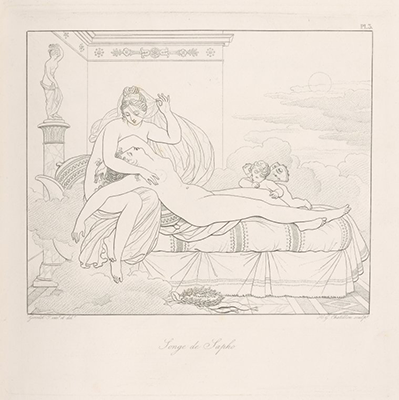
Greek female poet Sappho, whose poetry is centered on the love between women, is born. The word “lesbian” is derived from the name Lesbos, the island of Sappho’s birth.

Greek female poet Sappho, whose poetry is centered on the love between women, is born. The word “lesbian” is derived from the name Lesbos, the island of Sappho’s birth.

Plato’s philosophical text Symposium argues that love between males is the highest form of eros.
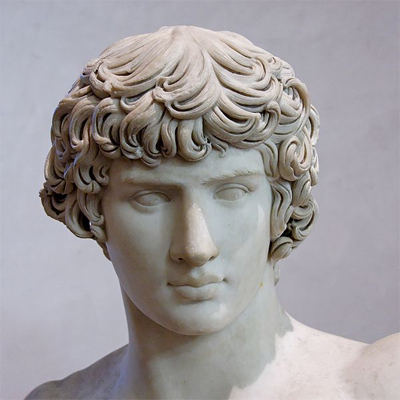
Antinoüs (117–138 CE), the lover of Roman Emperor Hadrian, drowns; in turn, Hadrian creates a cult giving Antinoüs the status of a god.

The Christian emperors Constantius II and Constans issue the first legal regulation against same sex marriage, with “exquisite punishment” meted out to those who marry “in the manner of a woman.”
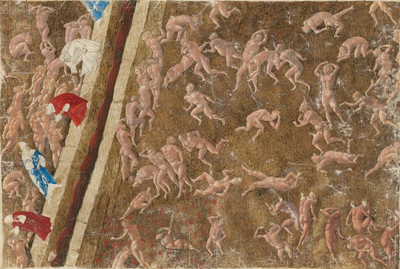
Dante’s Inferno places sodomites in the 7th circle of Hell.
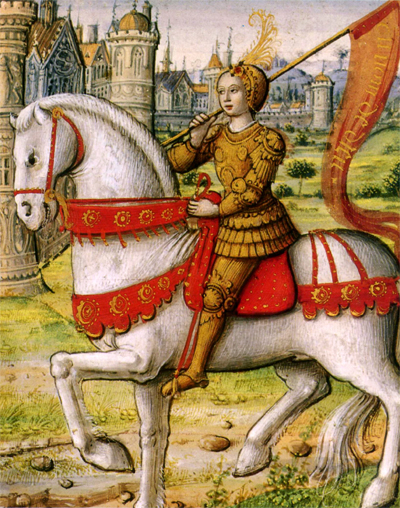
Jeanne d'Arc (1412-1431) is denounced by the Inquisition and burnt alive, in part for claiming it was “God's command” for her to wear men's clothes, keep her hair cut short, and keep "no garment which might indicate her sex." She later would come to symbolize defiance of convention and become an icon of the woman's suffrage movement.
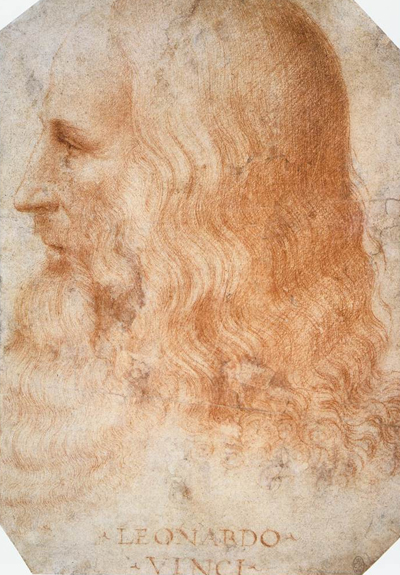
Leonardo Da Vinci (1452-1519) and three other men are charged in Florence with sodomy. They are later acquitted.
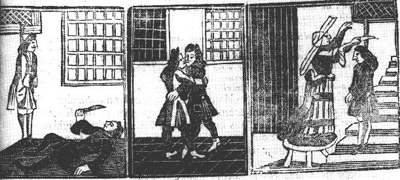
The Buggery Act is passed in England, making all male-to-male sexual activity a crime punishable by hanging. The law was repealed in 1861.
Sarah White Norman is convicted for “lewd behavior” with Mary Vincent Hammond. Her trial documents are the only surviving record of female same-sex relations in the 17th-century Puritan colonies.
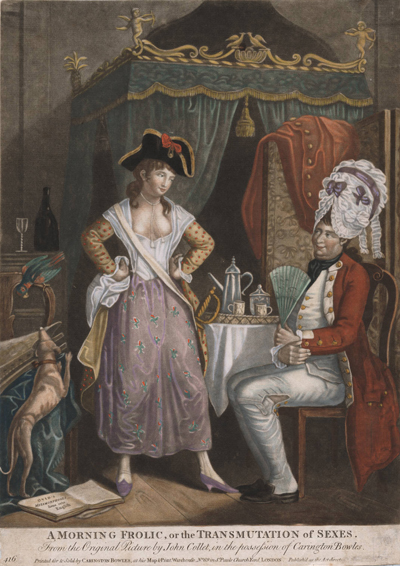
London’s most famous molly house, Mother Clap’s, is raided by the police. Three men are arrested and later executed. Molly houses were taverns or coffee-houses that were safe places for homosexuals and crossdressers to meet.
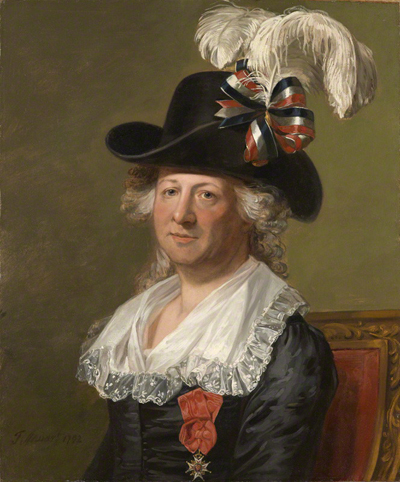
The French diplomat, spy, and soldier Chevalier d’Eon (1728-1810) is sent on a secret mission to Russia disguised as a lady. He later claims to physically be a woman. His new sexual identity is recognized by King Louis XVI, who provides him funds to buy new women’s clothing. However, after d’Eon’s death in 1810, doctors discover that he was anatomically male.
An investigation by Commissioner Foucault and Inspector Noël of the Parisian police determines that some “pederasts” wear shoes with laces or bows, rather than buckles, as a sartorial code to identify each other in public.

English social reformer Jeremy Bentham (1748-1832) argues for the repeal of sodomy laws in his essay “On Paederasty”.
France becomes the first West European country to decriminalize homosexuality.
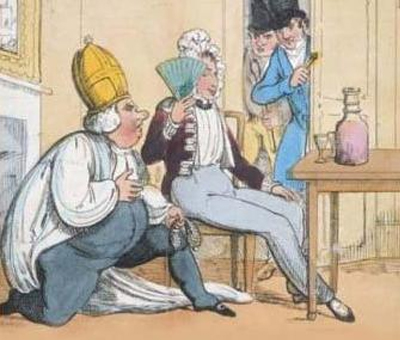
Percy Jocelyn (1764-1843), Lord Bishop of Clogher, is famously caught with his pants down, literally, with a young soldier in a back room at the White Lion Pub in Haymarket, London, on the evening of 19 July 1822.

Count Robert de Montesquiou (1855-1921), the French dandy, aesthete, and poet, is born. Montesquieu, who preferred the company of attractive young men, was a well-known figure in Parisian high society and a promoter of Art Nouveau in France.
In England, the death sentence for sodomy is removed and the penalty becomes imprisonment from 10 years to life.

Karl Heinrich Ulrichs (1825-1895), the first self-proclaimed homosexual in Germany to speak out publicly for homosexual rights, is barred from giving a paper at a German legal conference in Munich proposing that same-sex relationships be de-criminalized.

The German-Hungarian publicist Karl-Maria Kertbeny (1824-1882) coins the term "homosexual" in a letter to Karl Heinrich Ulrichs , the German sex law reformer who proposed the concept of “homosexuality” in 1864 in order to establish “a new terminology that would refer to the nature of the individual, and not to the acts performed.”
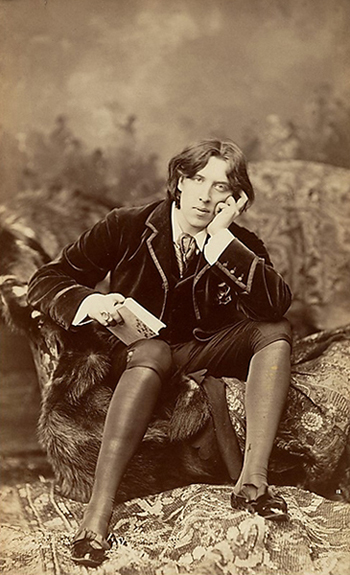
Oscar Wilde (1854-1900) is prosecuted and sentenced to two years of hard labor in prison for “gross indecency.”
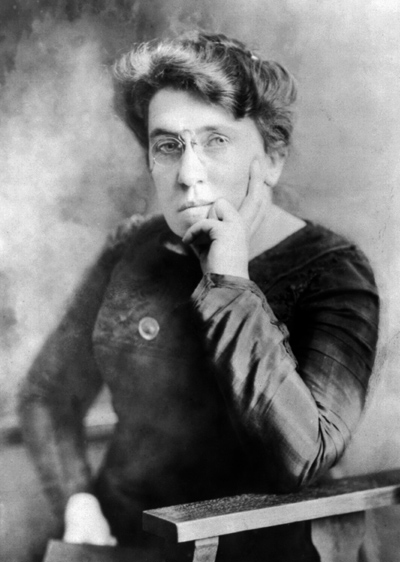
Emma Goldman (1869-1940), an anarchist known for her political activism, goes on a speaking tour that includes the defense of homosexuality as one of its topics. Goldman was described by a contemporary as "the first and only woman, indeed the first and only American, to take up the defense of homosexual love before the general public."
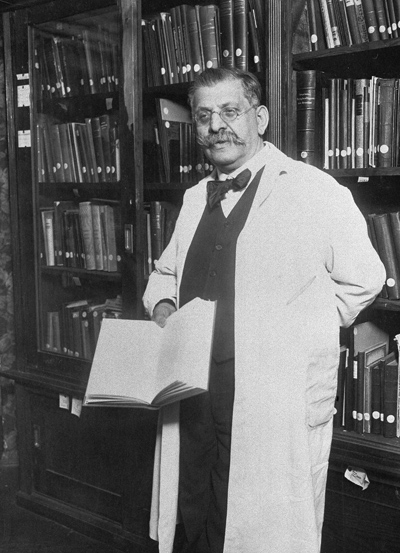
Doctor Magnus Hirschfeld (1868-1935) founds the Institute for Sex Research in Berlin. “Soon the day will come when science will win victory over error, justice a victory over injustice, and human love a victory over human hatred and ignorance.”
An early recording of Mischa Spolianky‘s Das Lila Lied (The Lavendar Song). The song is considered a gay “anthem” of Berlin’s cabaret scene. A 1996 recording performed and recorded by Ute Lemper features lyrics in English.
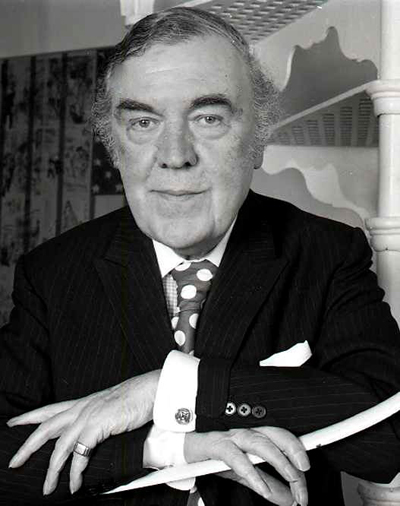
Sir Norman Hartnell (1901-1979) opens his dress salon in London. Hartnell was known for a flashy and glamorous style that sometimes approached drag-queen camp.
The Society for Human Rights, the first homosexual rights organization in America, is formed in Chicago by Henry Gerber (1892-1972).
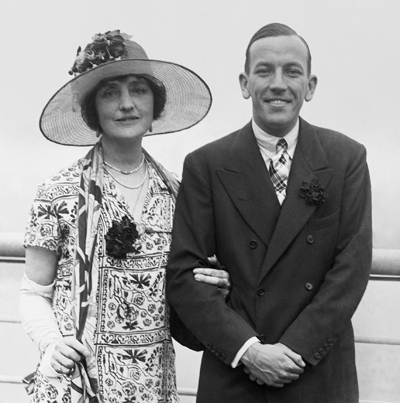
English playwright, director, and actor Noël Coward (1899-1973) wears a dressing gown in his play The Vortex. Coward, a closeted gay man, became famous for his personal style, which TIME magazine describes as "a combination of cheek and chic, pose and poise".
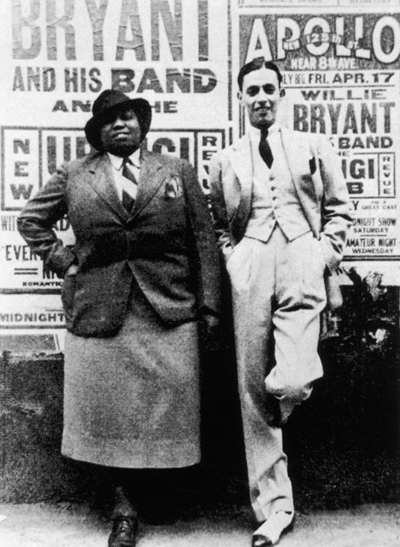
Gertrude “Ma” Rainey (1886-1939) sings “It’s true I wear a collar and a tie … Talk to the gals just like any old man” in her song Prove It on Me Blues. It’s the height of the Harlem Renaissance (originally called the New Negro Movement) and there is an unspoken tolerance for gays, lesbians, and bi-sexuals. Shown here is Gladys Bentley (1907-1960), a notorious and popular cross-dressing blues singer who performed at Harlem’s Clam House in a white tuxedo and top hat.

The Danish artist Einar Wegener (1882-1931) becomes one of the first recorded recipients of gender reassignment surgery. Einar, who was married to the fashion illustrator Gerda Wegener, presented as a woman throughout the 1920s, often posing as his wife’s model using the name Lili Elbe. Einar began the first of 5 sex reassignment surgeries in 1930; however, the fifth operation in 1931 led to transplant rejection and her untimely death.
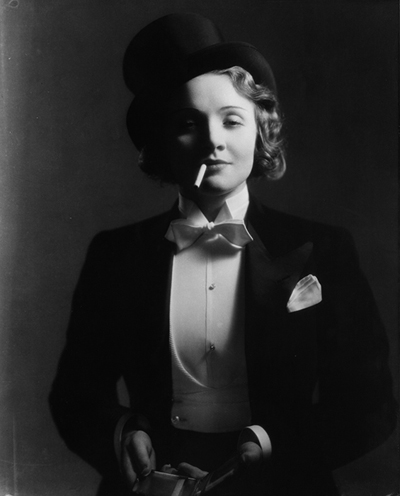
Marlene Dietrich (1901-1992) wears a man’s tuxedo in the film Morocco. Dietrich often performed in a top hat and tails, and also wore pants in her personal life, making her an early adopter of the androgynous look.
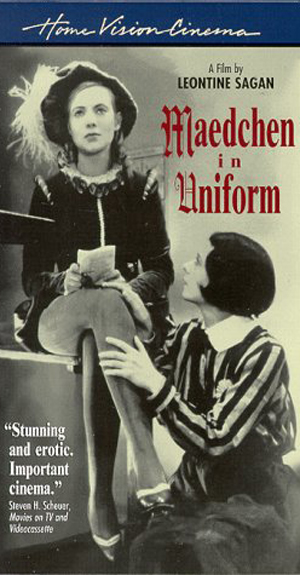
The first explicitly lesbian film Girls in Uniform, is released in Germany.
The National Socialist German Workers Party bans homosexuality, sending homosexuals to concentrations camps.
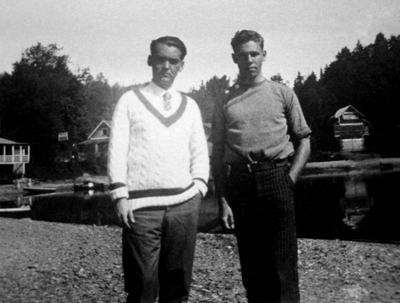
Federico García Lorca (1898-1936), a Spanish poet and known homosexual, is murdered at the beginning of the Spanish civil war. Some believe it is because of his sexual orientation.
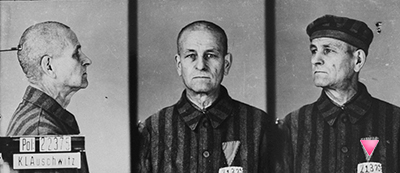
The pink triangle, or Rosa Winkel, is used to identify and shame gay men in Nazi concentrations camps. In the 1980s, ACTUP reappropriates this symbol so that it may represent gay pride.
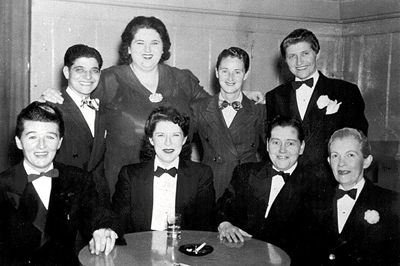
Mona’s 440 Club, the first American lesbian bar, opens in San Francisco. Mona’s waitresses and female performers wear tuxedos.
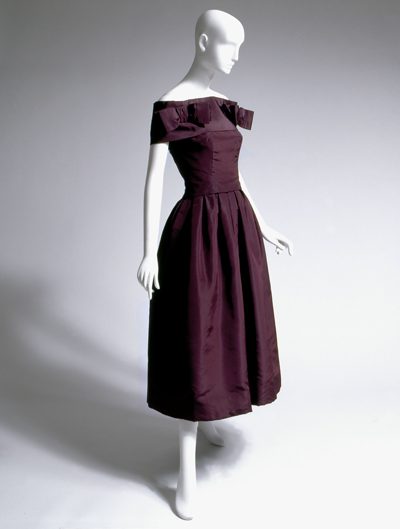
Christian Dior (1905-1957) launches the New Look, an ultra-feminine style, characterized by voluptuous curves and longer hemlines. The sight of women in Dior’s New Look gowns is seen by Coco Chanel “as a red flag on a bull.” Gay filmmaker Franco Zefferelli describes Chanel hissing at girls: “Look at them. Fools, dressed by queens living out their fantasies. They dream of being women so they make real women look like transvestites… they can barely walk. I made clothes for the new woman. She could move and live naturally in my clothes. Now look at what those creatures have done. They don’t know women, they’ve never had a woman.”
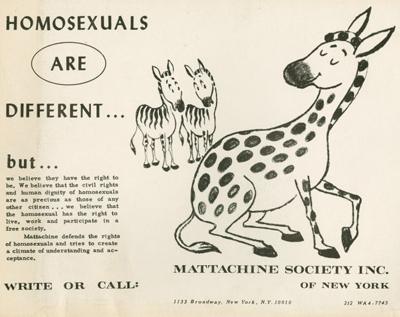
The Mattachine Society, the first American homosexual group, is created in Los Angeles. Gay fashion designer Rudi Gernreich (1922-1985), credited for designing the first topless swimsuit (monokini) and unisex clothing, is a founding member of the association.

ONE National Gay & Lesbian Archives is founded. It is the oldest active LGBTQ organization in the United States and today is the largest repository of LGBTQ materials in the world.
Christine Jorgensen (1926-1989) becomes the first person widely known to undergo male-to-female sex reassignment surgery.

The Daughters of Bilitis (DOB), the first national lesbian political organization, is founded in San Francisco. In October 1956, they produce the first US lesbian publication to be distributed nationwide.
American magazine Physique Pictorial features a Tom of Finland (1920-1991) illustration of a two log drivers on its cover. Tom of Finland’s homoerotic drawings depicting lumberjacks, leather men, bikers and sailors would inspire the “Castro-clone” look (fit leather or Levi jeans, plaid shirts, jackets, boots, heavy moustache and sideburns) that would appear in San Francisco’s Castro neighborhood during the 1970s.
The Wolfenden Committee report is published in Britain. The report recommends that "homosexual behaviour between consenting adults in private should no longer be a criminal offence" in the United Kingdom.
Psychologist Evelyn Hooker (1907-1996) publishes a paper of a study demonstrating that there is no measurable psychological difference between heterosexual and homosexual men. This later becomes a chief factor in the American Psychiatric Association’s removal of homosexuality from its handbook of disorders in 1973.
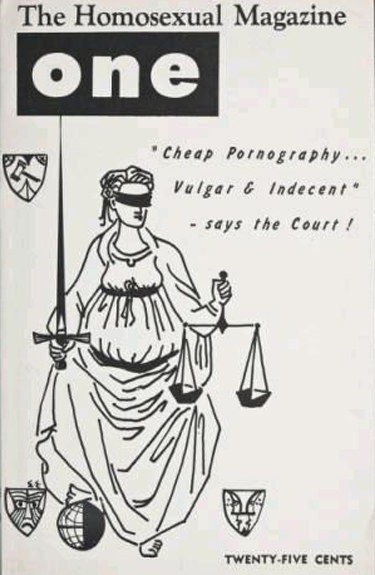
The United States Supreme Court rules in favor of the first Amendment rights of ONE: The Homosexual Magazine. Two lower court decisions had argued the magazine violated the 1873 Comstock Act, which prohibited sending “obscene, lewd, and/or lascivious” material through the mail.
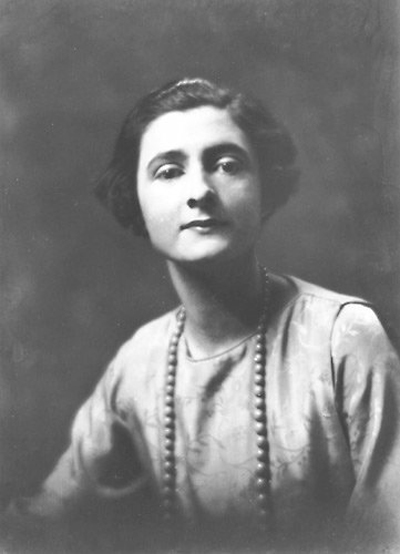
Lesbian poet Mercedes de Acosta (1883-1968) publishes her autobiography, Here Lies the Heart. De Costa was professionally unsuccessful, but is remembered for her lesbian relationships with Isadora Duncan, Greta Garbo, and Marlene Dietrich. She donated many items from the wardrobe of her fashionable sister, Rita de Acosta Lydig (1880-1929), to the Costume Institute at the Metropolitan Museum of Art.
Illiinois is the first state to remove criminal penalties for consensual sodomy from its criminal code.

Gays and lesbians picket outside Independence Hall in Philadelphia, the first of five July 4th “Annual Reminders” organized to bring attention to the lack of civil rights protections for the LGBT community.
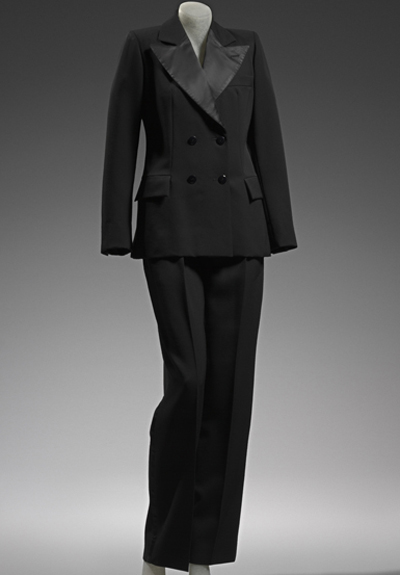
Yves Saint Laurent (1936-2008) introduces his le smoking tuxedo suit. Unlike in the 1930s, this attempt at menswear for women hits a nerve. Sartorial rules still frowned on women wearing pants, but times were changing and le smoking was a sophisticated choice.
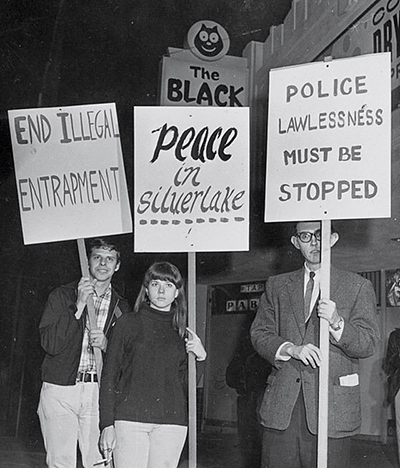
The term “Pride” is associated for the first time with LGBT rights when the Black Cat Tavern, an LGBT bar in Los Angeles, is raided on New Year’s Day. The raid propels numerous protests organized by P.R.I.D.E. (Personal Rights in Defense and Education), whose small newsmagazine was renamed The Advocate and notably reported on the Stonewall riots in New York City two years later.
Gay Saville Row designer Tommy Nutter (1943-1992) dresses 3 out of the four Beatles for the cover of the album Abbey Road (George Harrison elected to be photographed in jeans). Nutter mixed traditional tailoring skills with innovative designs. He died of complications from AIDS in 1992.
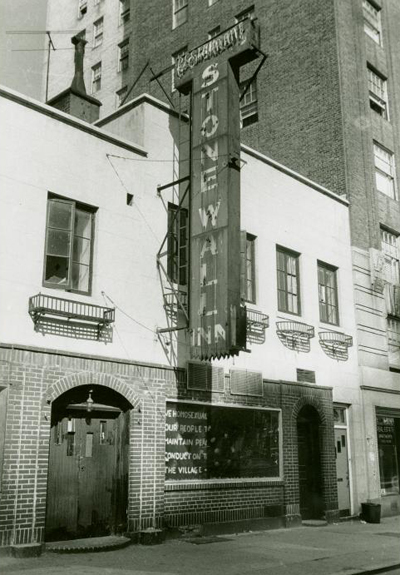
A series of violent protests against police raids take place at Greenwich Village’s Stonewall Inn, a bar popular with the gay community. Police raids in gay bars were routine and the riots were a groundswell reaction to systemic marginalization and persecution. The Stonewall riots lasted for several days and changed the direction of the LGBT movement.
We were tired of being targets of manipulation and exploitation; tired of being maggot excuses for raids upon our assembly, tired of being someone else's scapegoat for some other reason. Tired of being threatened and harassed and entrapped and told what we were, what to do, and how to do it, when to do it, how to feel, what to say, how to be, what to be..ya can't be it outside, nor can you inside! --Christopher Street Liberation Day Committee member, 1974
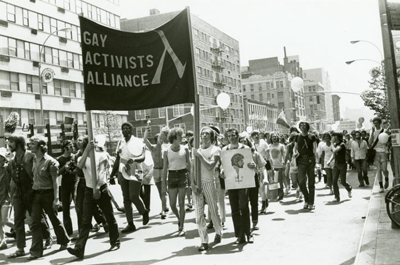
The first gay Liberation Day March is held in New York City on June 28, 1970, marking the first anniversary of the Stonewall riots. On that same weekend in 1970, three other U.S. cities -- Chicago, Los Angeles, and San Francisco -- also hold commemorative marches. Today, all over the world, pride marches in June honor the spirit of the Stonewall riots and celebrate LGBT history, culture, and equality.
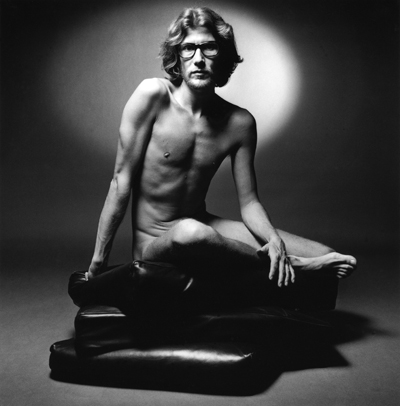
Yves Saint Laurent (1936-2008) poses nude for the advertising campaign of his men’s fragrance Pour Homme.
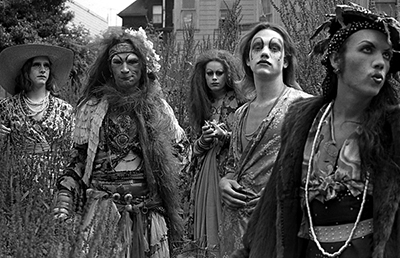
The Cockettes, a psychedelic drag queen troupe from San Francisco, perform at the Anderson Theater in NYC. The Cockettes combined dancing, costumes, and rebellious sexuality in flamboyant shows, inspiring the glitter era of David Bowie, Elton John and the aesthetic of the film The Rocky Horror Picture Show.
Jim Foster (1934-1990) and Madeline Davis (b.1940) speak at the Democratic national convention as the first openly gay and lesbian delegates. They advocate adding a gay rights plank to the Democratic platform.
"We do not come to you begging your understanding or pleading your tolerance. We come to you affirming our pride in our lifestyle, affirming the validity of our right to seek and to maintain meaningful emotional relationships and affirming our right to participate in the life of this country on an equal basis with every citizen."
The American Psychiatric Association removes homosexuality from its Diagnostic and Statistical manual of Mental Disorder (DSM-II).
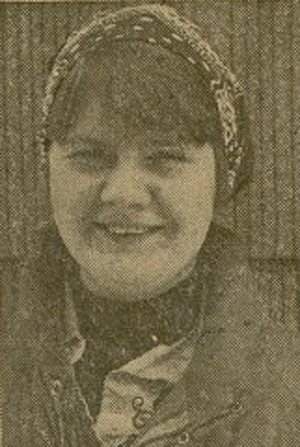
Kathy Kozachenko is the first openly gay American to run successfully for public office. She is elected to the Ann Arbor city council.
French designer Claude Montana (b.1949) presents his first fashion show. Montana pioneered the introduction of leather from erotic street styles into high fashion—for both men and women.
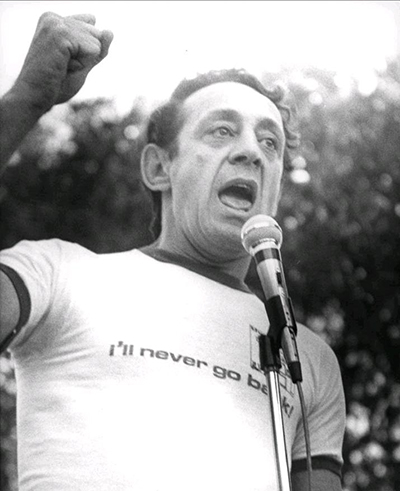
Harvey Milk (1930-1978) is elected to San Francisco’s Board of Supervisors and proposes an ordinance that will protect gays and lesbians from being fired for their sexual orientation.
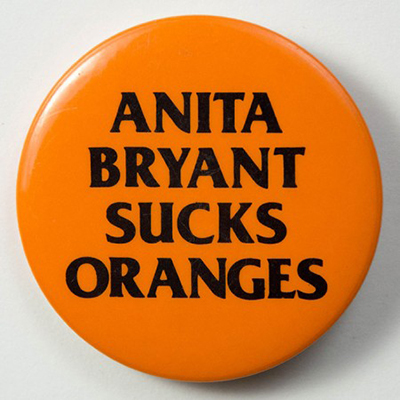
Dade County, Florida, enacts a Human Rights Ordinance that prohibits discrimination on the basis of sexual orientation. The ordinance is repealed the same year after an anti-homosexual campaign led by singer and former Miss Oklahoma Anita Bryant. As a response to Bryant’s political success, gay groups organize a boycott of Florida Citrus products for which Bryant was the spokesperson.
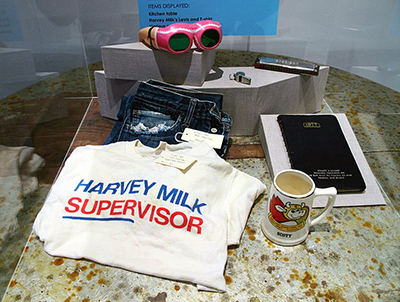
San Francisco Supervisor Harvey Milk (1930-1978) is assassinated.
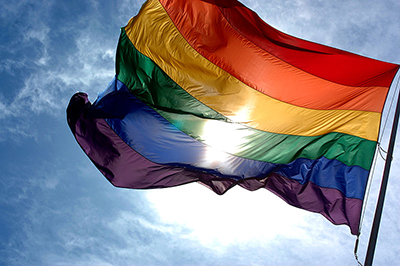
The rainbow flag, designed by Gilbert Baker, makes its debut in the Gay Freedom Day Parade in San Francisco.
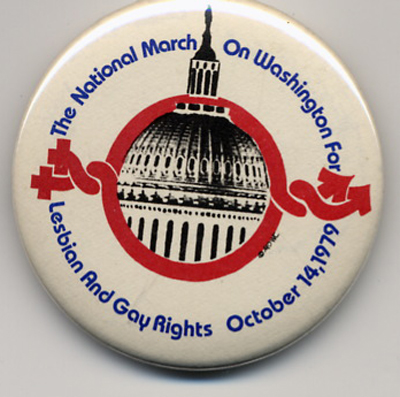
75,000 to 125,000 people attend the first National March on Washington for Lesbian and Gay Rights.
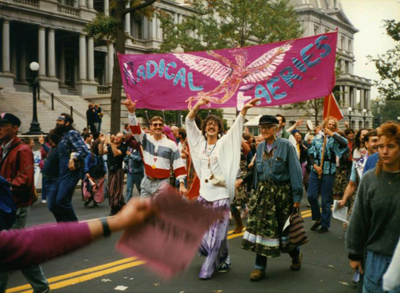
The Radical Faeries, a counter cultural movement, is founded by Harry Hay (1912-2002). Radical Faeries reject traditional gender roles and challenge the commercialization of LGBT life. The members of the group look for a spiritual dimension to sexuality.

The street performer/protest group The Sisters of Perpetual Indulgence make their debut in San Francisco. Members wear the attire of nuns and do not hide their male attributes (i.e. facial hair). They protest intolerance and educate people about AIDS and safe sex.
The Human Rights Campaign, America’s largest LGBT civil rights organization, is founded by Steve Endean.
The CDC uses the term AIDS for the first time to name the condition previously called gay cancer, gay compromise syndrome, and GRID (gay-related immune deficiency).
The Gay Men’s Health Crisis, the world’s first and leading provider of HIV/AIDS prevention, care, and advocacy, finds its informal beginning when an answering machine in the home of volunteer Rodger McFarlane acts as the first AIDS hotline — receiving over 100 calls the first night.
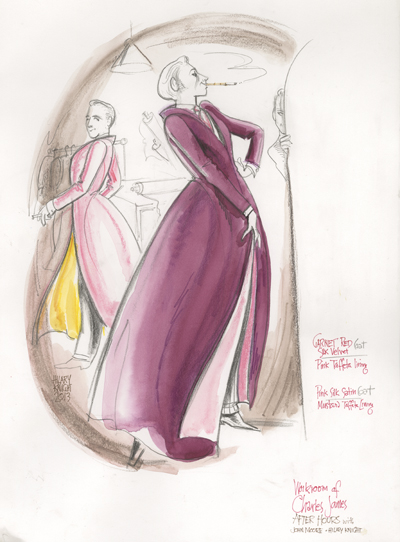
A Charles James (1906-1978) retrospective, The Genius of Charles James, opens at the Brooklyn Museum. The Anglo-American couturier was quite open about his homosexuality. “James was gay from birth, I think,” the illustrator Hilary Knight told Valerie Steele in an interview. “He was very sexy. He talked about sex all the time.”
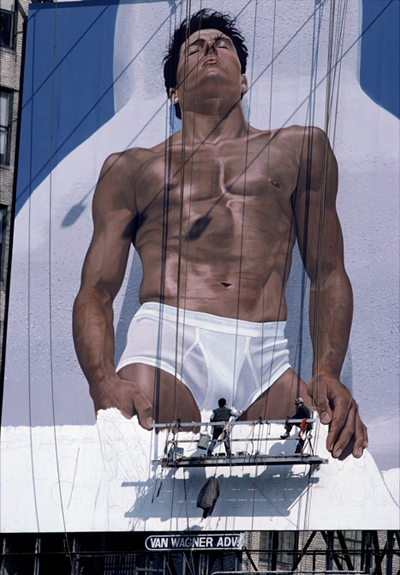
To announce his men’s underwear collection, American designer Calvin Klein (b.1942) displays a billboard in Times Square featuring an image of a muscular man wearing white briefs. Guy Trebay commented on the seminal underwear ad: "In [making this ad], Mr. Klein was marking the beginning of both major changes in the conventions of masculine presentation and an overall democratization of desire."
The Lesbian, Gay, Bisexual & Transgender Community Center is founded in NYC. The Center serves those in crisis: the young, the elderly, people living with HIV and AIDS, survivors of anti-gay or anti-lesbian violence, people struggling with substance abuse, and gay people and their friends and families overwhelmed by the devastating toll of the AIDS epidemic.
DIFFA: Design Industries Foundation Fighting AIDS is founded by Patricia Green and Larry Pond. DIFFA has mobilized the immense resources of the design communities and granted over $40 million to hundreds of AIDS service organizations nationwide. DIFFA’s co-founder, Larry Pond, died of AIDS in 1992 at age 42.
Fashion designer Jean Paul Gaultier (b.1952) introduces a skirt for men in his Spring/Summer 1985 collection Et Dieu Créa L'Homme. While his collections have been based on street wear, his runway shows often play with traditional gender roles.
The Hetrick-Martin Institute (est.1979) founds the groundbreaking Harvey Milk High School in collaboration with the New York City Department of Education. The school is devoted to serving at-risk youth.
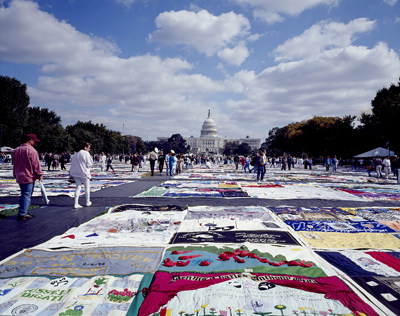
NAMES project AIDS Memorial Quilt, a gigantic quilt made to commemorate the lives of people who have died of AIDS related causes, is conceived by gay rights activist Cleve Jones (b.1954).
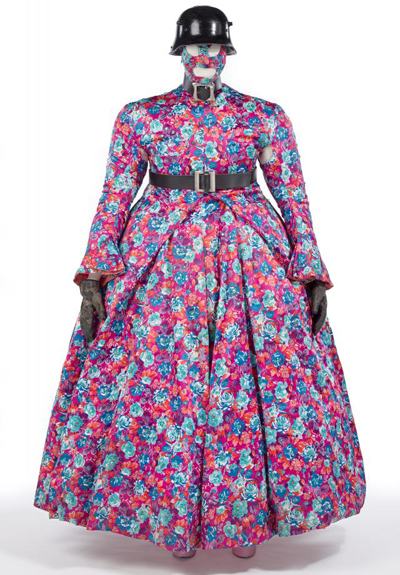
Fashion designer, performer, and model Leigh Bowery (1961-1994) opens the infamous disco club Taboo in London. Bowery’s performances and gender-bending costumes would heavily influence, among others, pop singer Boy George and designer Alexander McQueen.
American actor Rock Hudson dies on October 2, 1985 of complications related to AIDS. Known for his debonair charm and striking good looks, he starred as a Hollywood leading man in films opposite Doris Day, Elizabeth Taylor, and Julie Andrews. The first major Hollywood celebrity to publicly announce his AIDS diagnosis, Hudson’s announcement prompted a wider public awareness of the epidemic.
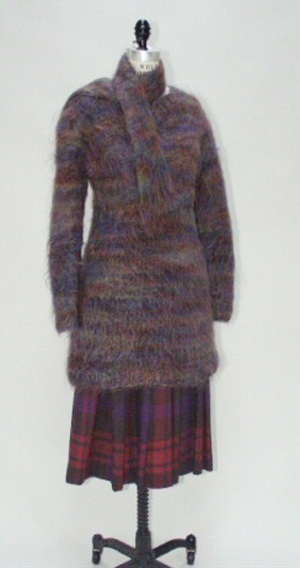
Fashion designer Perry Ellis (1940-1986) dies of AIDS-related encephalitis. Ellis was an innovative designer who understood traditional American clothing yet played with proportion, thereby altering it for a new generation.

ACT-UP (AIDS Coalition to Unleash Power) is founded at the Lesbian and Gay Community Services Center in New York in response to the US government’s failure to address the AIDS crisis.
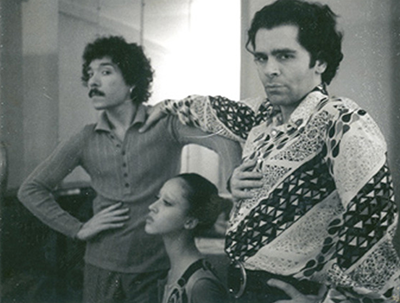
Fashion illustrator Antonio Lopez (1943-1987) dies of complications from AIDS. Lopez, who was born in Puerto Rico and moved to NYC at age 7, explored topics like queerness, ethnicity, and fashion in his drawing. “At his peak, he was as famous as Marc Jacobs is now. He was the biggest person in the fashion industry,” says Roger Padilha, an editor, along with his brother Mauricio, in Antonio Lopez: Fashion, Art, Sex & Disco.
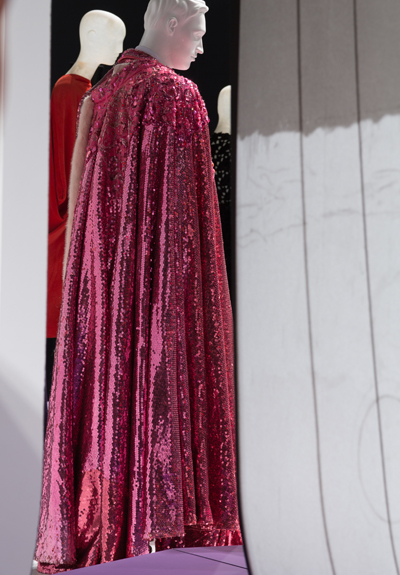
Liberace (1919-1987), the American pianist and vocalist, dies of pneumonia caused by AIDS. Liberace was famous for performing in extravagant sequined costumes, feathered capes, and furs. During his lifetime, Liberace denied being gay—and successfully sued someone who said he was. Nevertheless, he has become a gay icon.
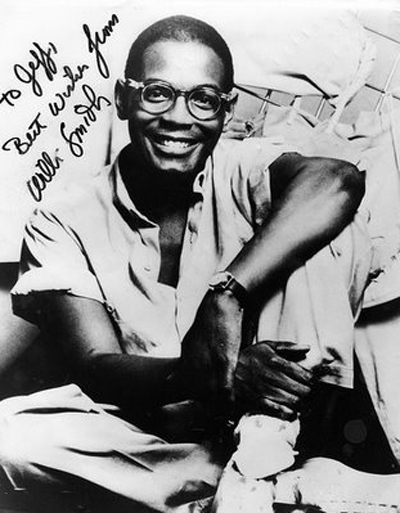
African-American fashion designer Willi Smith (1948-1987) dies at age 39 of AIDS-related illnesses. Smith was one of the fashion industry’s most successful young designers at the time of his passing.
The Love Ball at Roseland raises more than $300,000 for Design Industries Foundation Fighting AIDS (DIFFA).

American photographer Robert Mapplethorpe (1946-1989), known for his homoerotic pictures of nude men, dies of complications arising from AIDS.
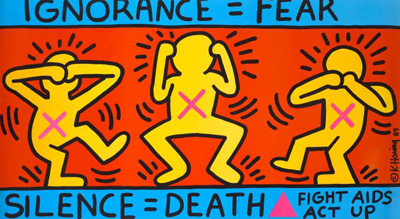
Painter Keith Haring (1958-1990) reveals he is HIV positive. Haring’s work was inspired by New York city street culture of the 1980’s.
The first annual “7th on Sale” event, produced by CDFA co-founders Stan Herman and Fern Mallis, is a huge success, raising over 4 million dollars for AIDS/HIV research.
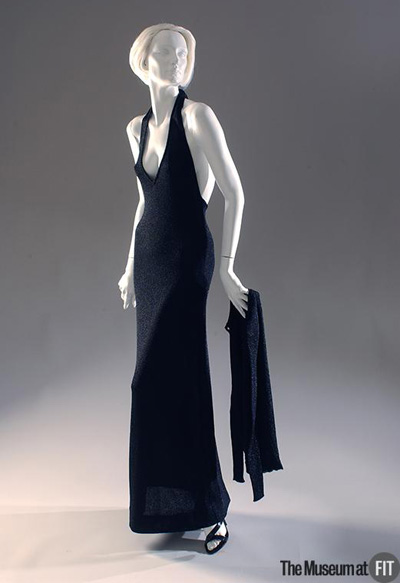
Fashion designer Roy Halston Frowick (1932-1990) dies from AIDS at age 57. Halston’s minimalist approach to fashion epitomized the glamour of the disco era in the 1970s.

Billboards by artist Félix González-Torres (1957-1996), depicting an empty bed, are displayed around New York City. The monochromatic image for “Untitled” (1991) MOMA project was taken after González-Torres’s partner died due to AIDS related complications.

Model and fashion icon Tina Chow (1950-1992) dies of complications from AIDS at the age of 41. Tina and her husband Michael were part of a New York scene that included Manolo Blahnik, Jean-Michel Basquiat, Mary Boone, Keith Haring, Antonio Lopez, Julian Schnable, and Andy Warhol.
George Michael (b.1963) commissions Thierry Mugler (b.1948) to direct this video for his hit song “Too Funky.” You can also watch the "making of" video here.
The US military’s “Don’t Ask, Don’t Tell“ policy is instituted.
Brandon Teena (1972-1993), a female to male transgender person, is murdered in Humboldt, Nebraska.
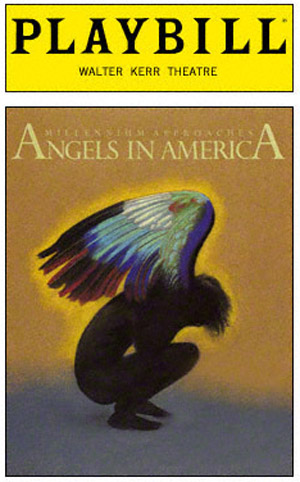
Tony Kushrer’s Angels in America, a play on the AIDS epidemic, opens on Broadway.
Bill Robinson (1948-1993), American pioneering designer of fashions for men, dies of AIDS-related complications. Robinson’s soft-shoulder jackets offered an alternative to the “power look” of the 1980s.
John Bartlett, “the Gaultier of American’s wear,” creates a men’s collection inspired by the film Forrest Gump, Jean Genet, and cross-dressing.
DOMA (the Defense of Marriage Acts), a law that defines marriage as the legal union of one man and one women, passes both houses of congress. DOMA restricts LGBT partnership rights.
Television sitcom character Ellen Morgan comes out as a lesbian on TV show Ellen, making actress Ellen DeGeneres (b.1958) the first out gay actress to play a lesbian character on television.
Gay fashion designer Gianni Versace (1946-1997) is murdered in Miami Beach. Versace combined overt sexuality with luxurious classicism in ensembles that referenced ancient Roman and Greek art, abstract painting, and Pop art. The Italian designer often used homoerotic images in his advertising.
Matthew Shepard (1976-1998), a young gay student, is murdered in Laramie, Wyoming.
Actress Natasha Richardson, member of the American Foundation for AIDS Research (amfAR), organizes Unforgettable: Fashion of the Oscar, an auction of Oscar dresses. Richardson’s father, theater and film director Tony Richardson died of AIDS-related causes in 1991.
Massachusetts becomes the first state to legalize gay marriage. The court finds the prohibition of gay marriage unconstitutional because it denies dignity and equality of all individuals. In the following six years, California, Connecticut, Iowa , Vermont, New Hampshire, and Washington D.C. will follow suit.
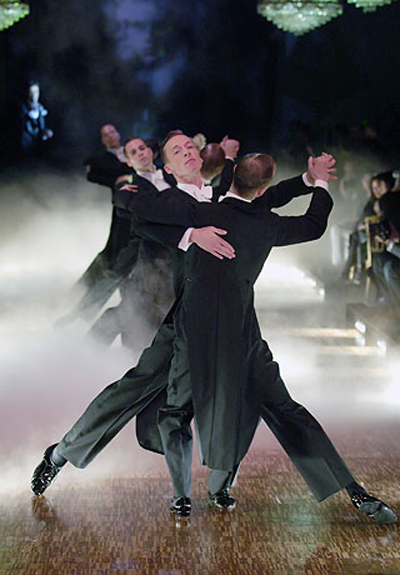
At the end of avant-garde designers Viktor & Rolf’s Spring 2007 show in Paris, four couples of men wearing tuxedos dance to the waltz. “We live in a heterosexual world, and we are a minority… if two men dancing at our show is still shocking, even in the fashion world, it says something about what is accepted and what is not,” Victor and Rolf stated.
The 'Don't ask, Don't tell' law, is repealed, ending a 17-year ban on gays serving openly in the military.
British designer Alexander McQueen (1969-2010) is found dead at his home in London. “My collections have always been autobiographical,” said McQueen, “a lot to do with my own sexuality and coming to terms with the person I am – it was like exorcizing my ghosts in the collections.”
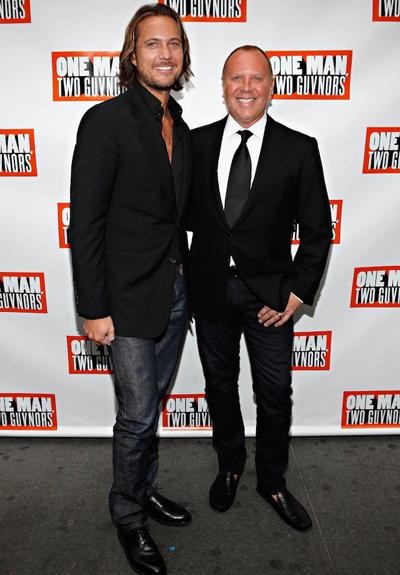
Fashion designer and "Project Runway" judge Michael Kors (b.1959) and his partner Lance LePere are married in Southampton, NY ,after a bill permitting same sex marriages comes into effect in New York State.
Wearing brightly colored dresses and balaclavas members of the Russian feminist punk-rock collective Pussy Riot stage an illegal performance to protest against Vladimir Putin at the Moscow cathedral of Christ the Saviour. Three members of the group were charged with hooliganism and sentenced to two years imprisonment.
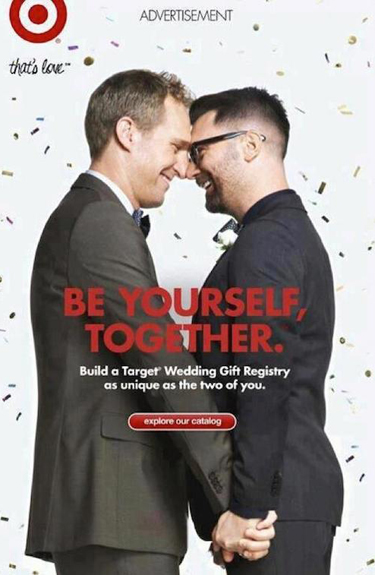
Target casts gay couples in its wedding registry ads.
Actress Jodie Foster (b.1962), wearing silver and navy paillettes by Armani, publicly acknowledges that she is gay at the Golden Globes Awards.
A key part of the 1996 Defense of Marriage Act (DOMA) is struck down by the Supreme Court. The court declares that in states where marriage is legal, gay couples must receive the same federal health, tax, Social Security, and other benefits that heterosexual couples receive.